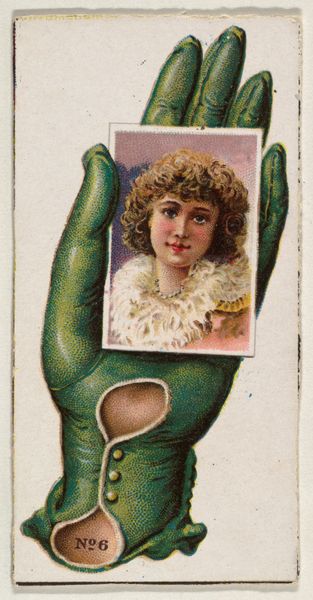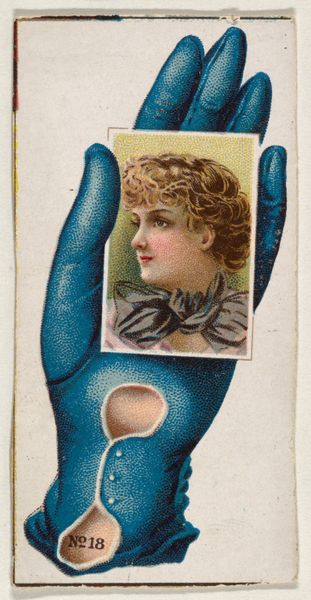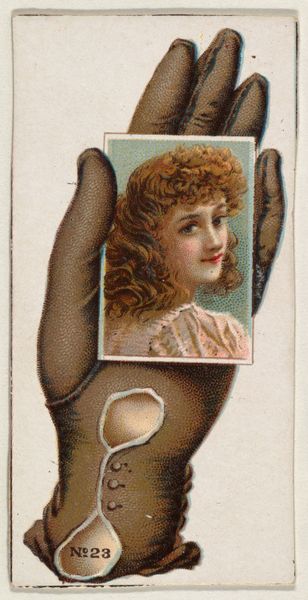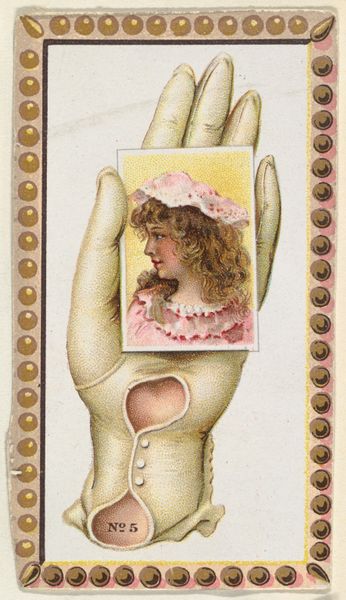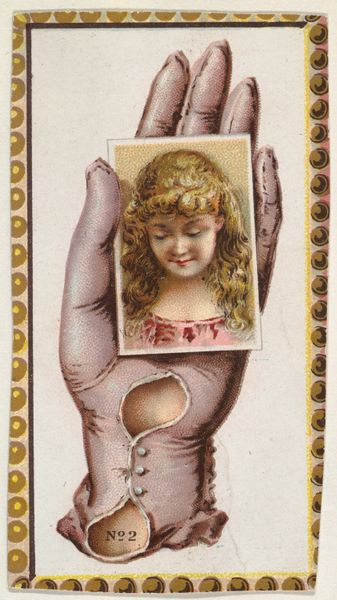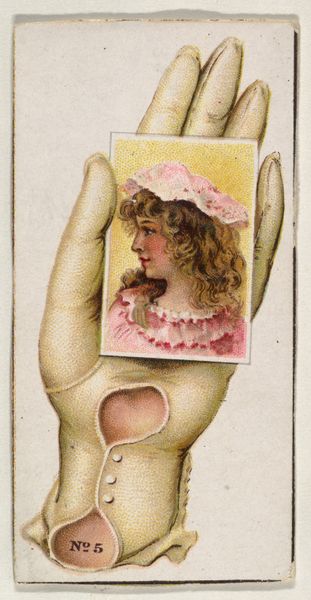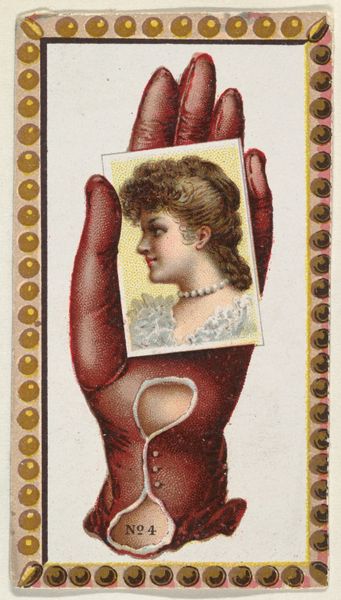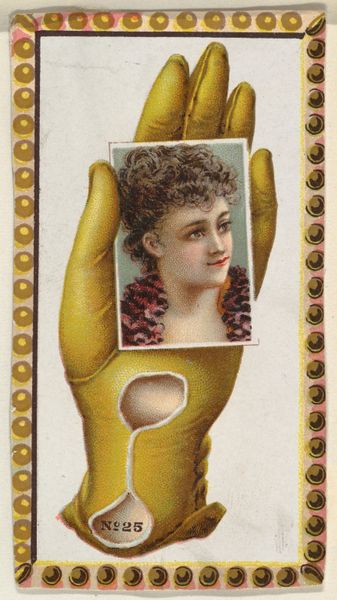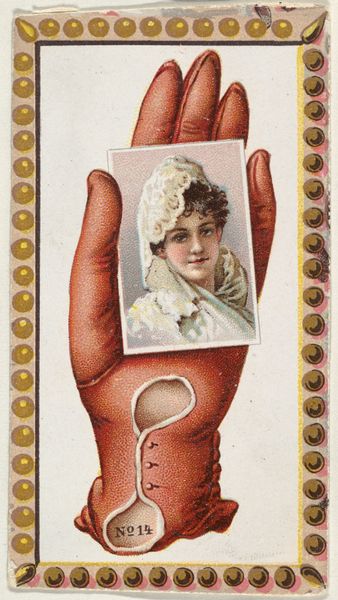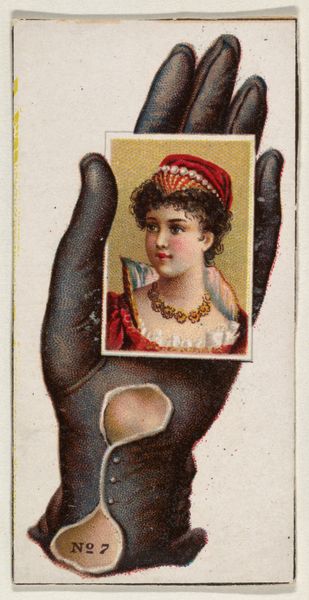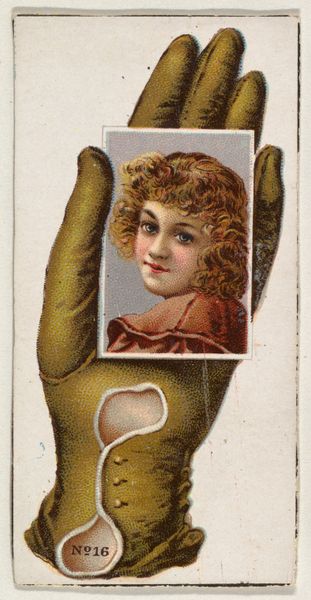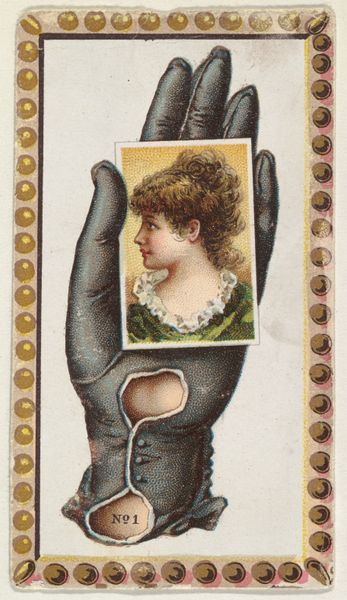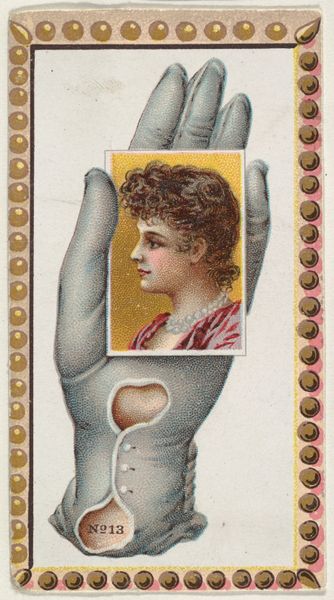
Card Number 6, cut-out from banner advertising the Opera Gloves series (G29) for Allen & Ginter Cigarettes 1885 - 1895
0:00
0:00
Dimensions: Sheet: 3 1/8 x 1 3/4 in. (8 x 4.5 cm)
Copyright: Public Domain
Curator: Let’s turn our attention to "Card Number 6, cut-out from banner advertising the Opera Gloves series (G29) for Allen & Ginter Cigarettes," dating from somewhere between 1885 and 1895. What strikes you first? Editor: A large, gloved hand in a somewhat sickly green holds a small portrait of a young woman. It's such a strange combination – a bit unsettling, almost surreal. Curator: Observe how the composition foregrounds the materiality of surfaces. The glossy sheen of the glove contrasts starkly with the matte finish of the portrait, which itself features meticulously rendered details. Notice how colored pencil and gouache highlight textures – from the fur collar to the woman's intricately styled hair. The eye is drawn to the detailed frame of circular motifs as well. Editor: And it is these constructed contrasts, too, that beg us to ask questions: who was the intended consumer here, and what sort of gendered performance does the work expect from its viewer? The advertisement seems targeted towards male smokers. How do the associations between luxury, smoking, and an idealized image of feminine beauty interlock in ways that solidify the gaze, class, and authority of the male viewer? Curator: You make an astute observation about the male gaze operating here. What fascinates me is the tension between the flatness of the overall image and the illusion of depth created through shadowing and layering. This juxtaposition reinforces its status as both an artwork and a promotional object. Editor: Indeed, thinking about its placement within the context of 19th century commodity culture sheds light on emerging social and commercial relationships that were very interested in producing new regimes of seeing and relating to the world around them. It raises further questions regarding value systems based on consumption, class, and visuality. The portrait becomes an object among objects within this new economy of the visual, something that further dehumanizes those whose portraits were commodities in similar kinds of social worlds. Curator: A thought-provoking insight. I’m especially grateful you have spotlighted ways in which our understanding of Allen & Ginter extends beyond just their pictorial language to address complex issues around commerce, visibility, and representation. Editor: Thank you. Bringing different frameworks together is necessary for our viewing.
Comments
No comments
Be the first to comment and join the conversation on the ultimate creative platform.
